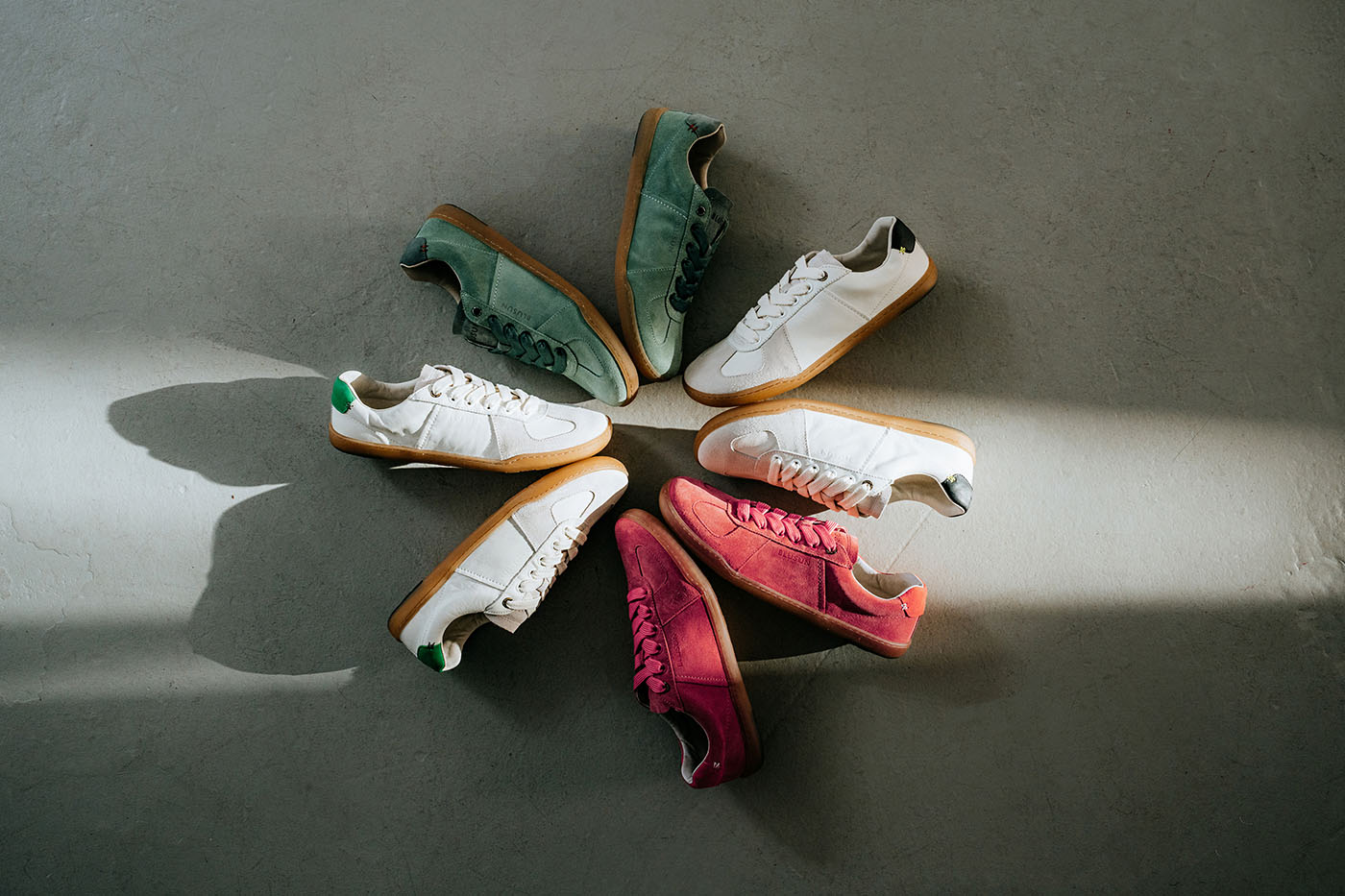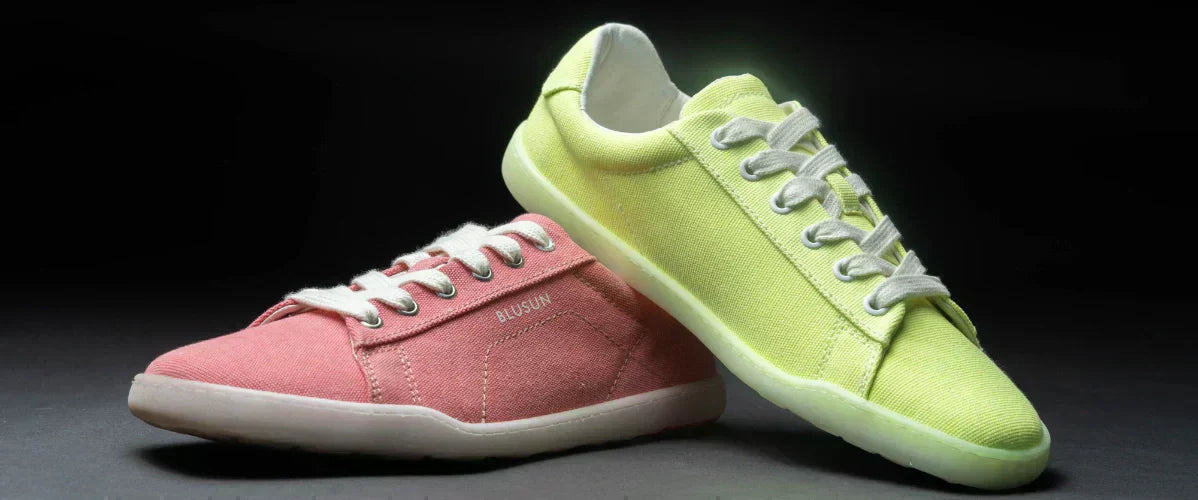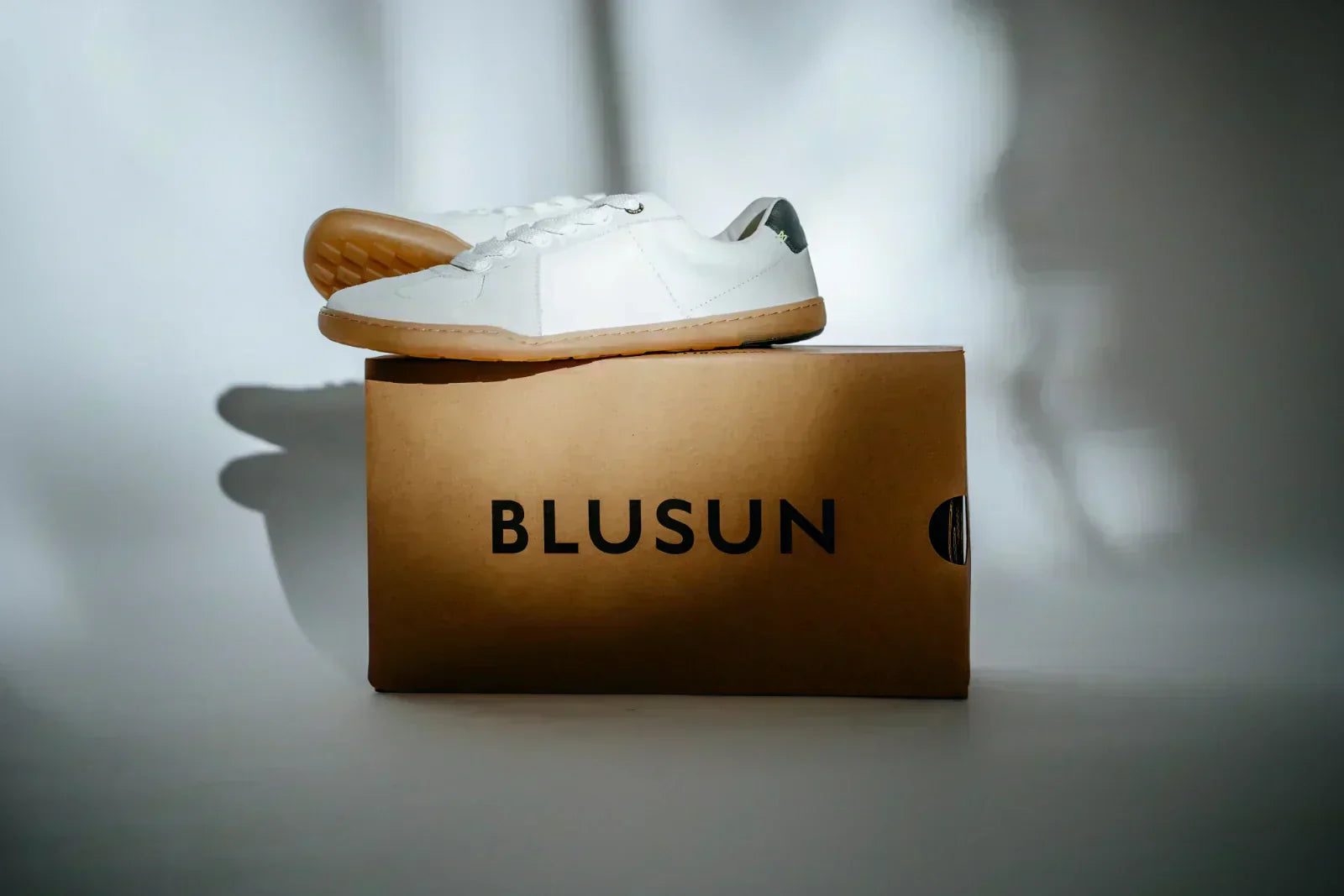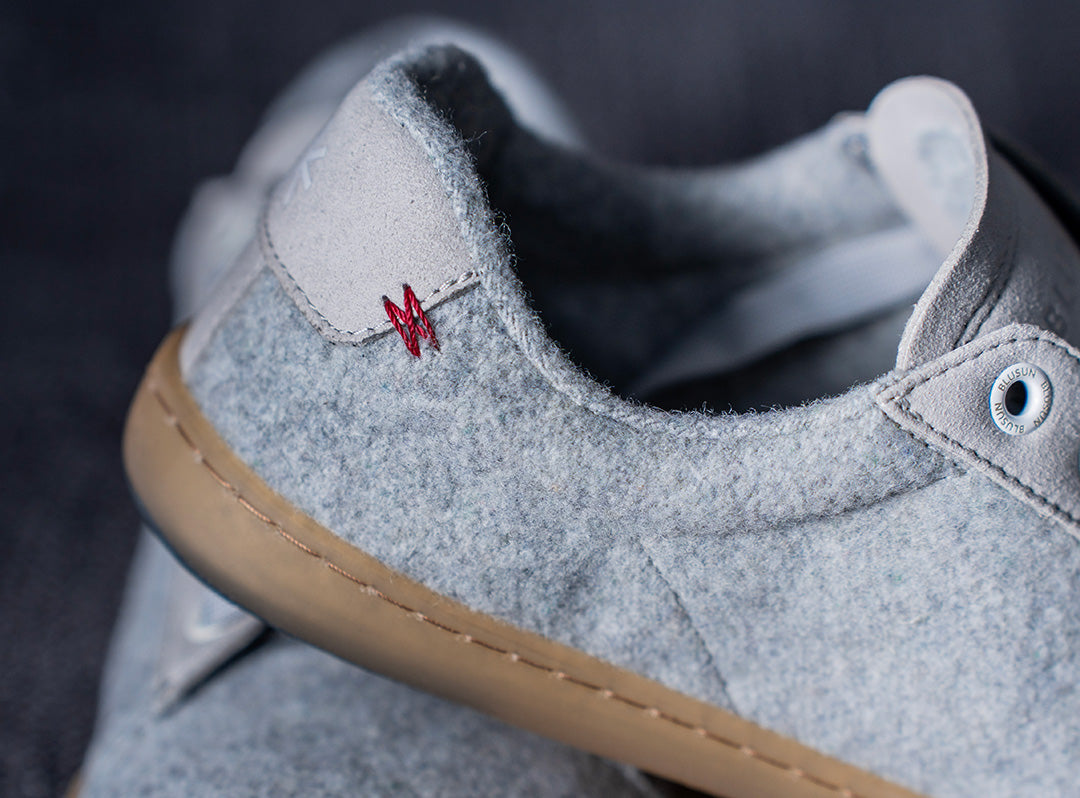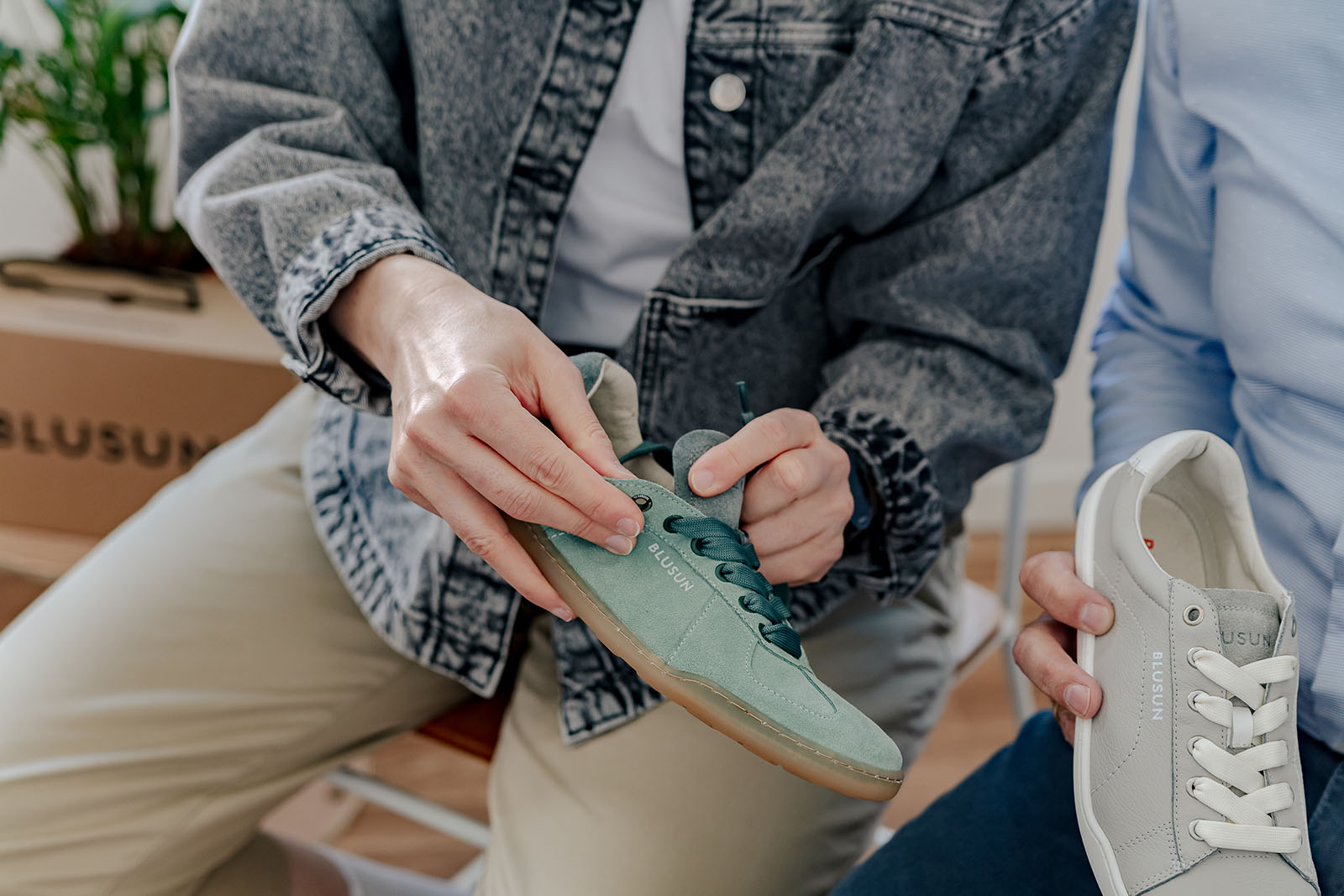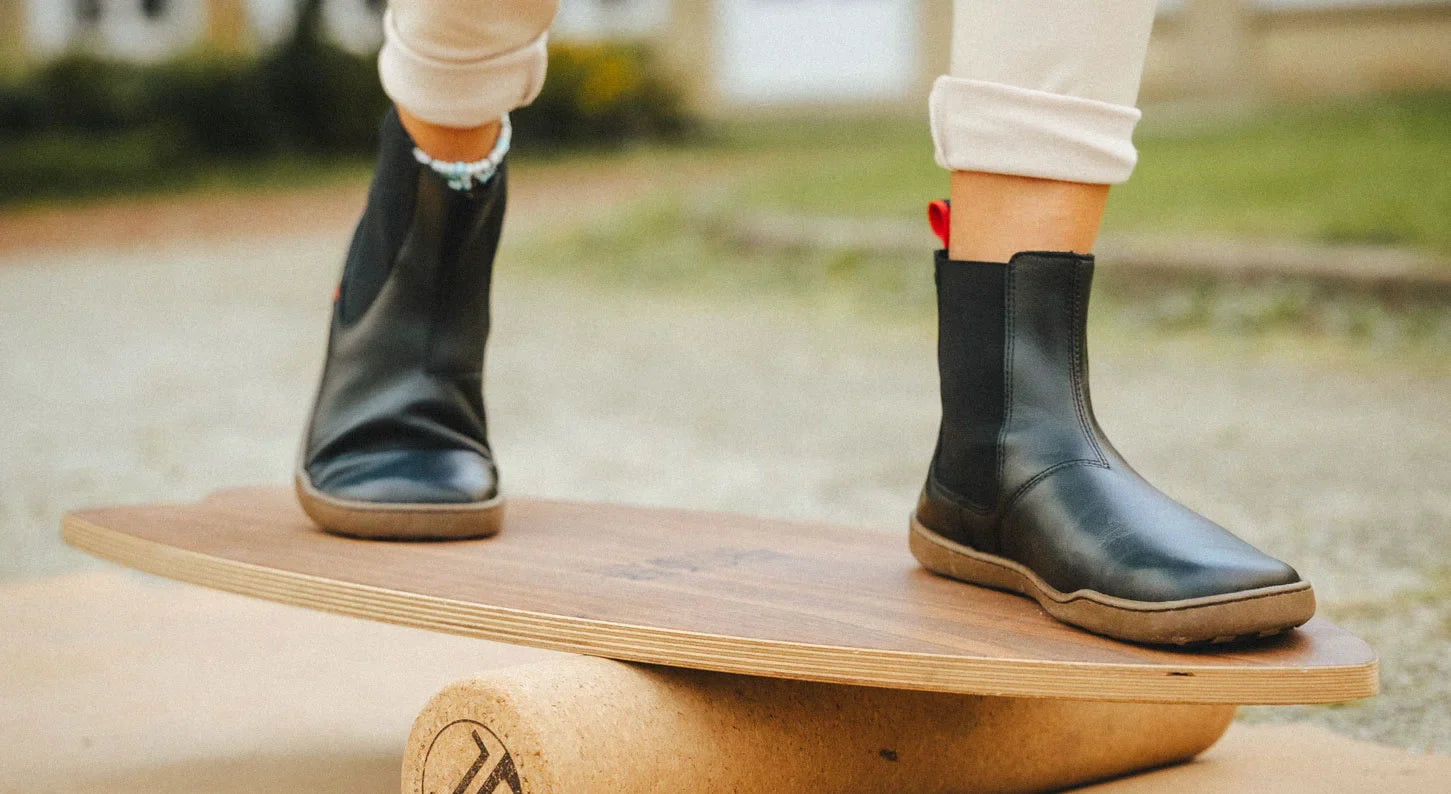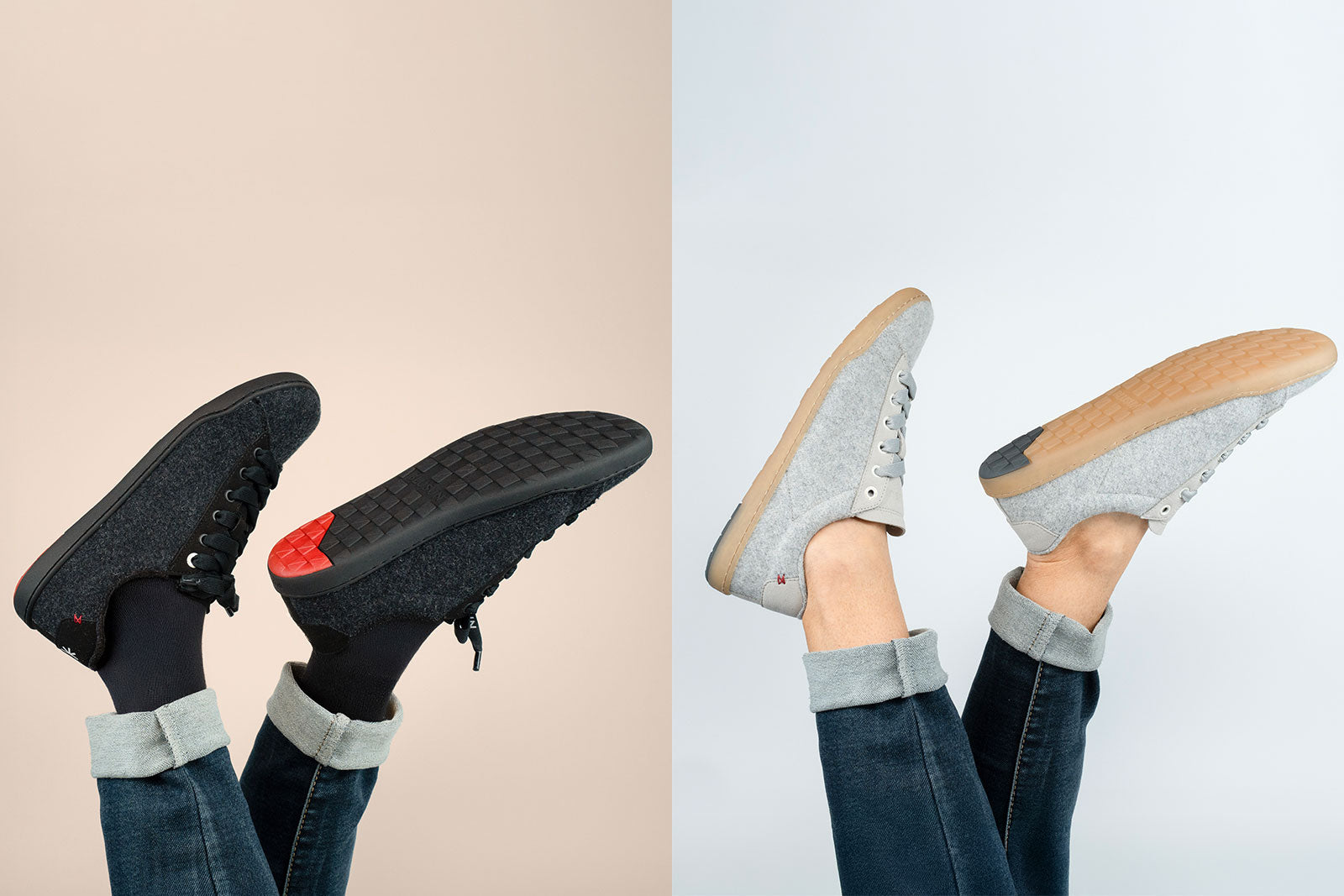
Do You Wear Barefoot Shoes with or without Socks?
Should you wear barefoot shoes with or without socks? This question divides the barefoot shoe community like no other. Both options have their pros and cons, which we’ll take a closer look at below.
In the end, there’s no right or wrong answer—it’s a matter of personal preference.
Our Recommendation
In Summer: During warm months, going sockless can feel great. Many people love the freedom of wearing barefoot shoes without socks. However, if you prefer socks for hygiene reasons or comfort, choose breathable materials like bamboo, silk, or Coolmax® blends. Avoid synthetic fabrics like polyester or polyamide, as they trap heat and moisture.
In Winter: On cold days, we recommend warm socks made of merino wool, virgin wool, or cashmere—thick or thin, depending on your preference. These keep your feet cozy without causing excessive sweating. If you’re a true minimalist, you can wear barefoot shoes without socks in winter, too.
Tip: If you plan to wear thick socks, try on your shoes with them to ensure a proper fit.
WITH Socks – Pros and Cons
Pros:
- Hygiene: Socks absorb sweat, reducing bacteria buildup and odor while extending the lifespan of your shoes.
- Comfort: Socks prevent friction and blisters, especially on long walks or during sports activities.
- Warmth: They keep your feet warm in cooler temperatures.
- Protection: Socks help preserve the inner lining of your shoes.
Cons:
- Wrong sock choice: Poorly fitting or low-quality socks can cause discomfort and friction.
- Moisture buildup: Socks made from cheap materials can create an unpleasant foot climate.
- Less barefoot feel: Even the best-fitting socks create a barrier between your feet and the ground.
WITHOUT Socks – Pros and Cons
Pros:
- Freedom: Bare feet feel more natural, and your toes have greater mobility—especially pleasant in hot weather.
- Better ground feel: Direct contact with the shoe enhances balance and coordination, which is beneficial for activities like hiking or training.
- Minimalist look: Sockless styling appears sleek and modern.
Cons:
- Less hygienic: Sweat can damage shoe materials and insoles, requiring regular cleaning and airing.
- Risk of blisters: Friction is more likely, especially during intense activities like running.
- More maintenance: Barefoot shoes worn without socks need frequent cleaning and thorough ventilation.

"I love the freedom of moving my toes inside the shoe—something that’s just not possible with most socks."
- Silvi (Founder of BLUSUN and passionate barefoot shoe wearer)
What to Consider When Wearing Socks
To make wearing socks in barefoot shoes as comfortable as possible, keep these factors in mind:
Fit and Comfort:
Socks should fit snugly without restricting circulation or toe movement. Ideally, choose left- and right-specific socks. If not marked, you can assign them yourself for consistent comfort.
Flat Seams:
Avoid thick seams that cause pressure points or friction. Seamless socks are best.
Avoid Low-Quality Materials:
Cheap socks with excessive synthetic fibers wear out quickly, feel uncomfortable, and create a poor foot climate. Avoid socks made from 100% polyester, low-quality wool, or those with a high elastane content. Investing in quality socks ensures better comfort and durability.
People with sensitive skin should also steer clear of chemically treated fabrics or low-grade synthetics, as they can cause irritation.
Recommended Materials:
- For cold weather: Merino wool, virgin wool, cashmere.
- For warm weather: Bamboo, Coolmax®, silk.
- For all-around wear: Merino wool blends with synthetic fibers.
Best Sock Types:
- Invisible socks/no-show socks: Great for a discreet look.
- Classic socks: Versatile for casual and formal outfits.
- Knee-high socks: Perfect for boots or cold days.
- Tights: A stylish alternative for colder weather.
Tips for Wearing Barefoot Shoes Without Socks
If you go sockless, hygiene is key, as sweat and dirt can impact the shoe material. Here’s how to keep your barefoot shoes fresh:
- Remove the insole (if applicable) after wearing and allow the shoes to air out.
- Air-dry your shoes naturally and never place them on a heater or in the oven.
- Alternate between two pairs of barefoot shoes to let them rest between wears.
- Ensure your shoes fit perfectly to minimize friction and blisters.
- Stay active in cold weather because movement helps keep your feet warm. (More on this: Can You Wear Barefoot Shoes in Winter?)
Conclusion: Do What Feels Right
Whether you wear barefoot shoes with or without socks depends on your personal comfort, the season, and your preferences. Whatever you choose, opt for high-quality materials to fully enjoy the barefoot experience while keeping your feet healthy.
PS: Check out our barefoot shoes for women and barefoot shoes for men.
